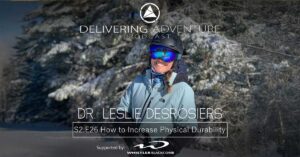Ever wonder why so many snow-skiers have KNEE pain? Are YOU making these mistakes?
It’s not your imagination, it is proven in the research that knees are the most frequently injured body part and the risk of severe arthritis is high.
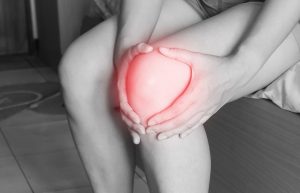
In this post, you will learn 5 reasons why snow-skiers have knee problems. Actually, you’ll learn 5 common mistakes that contribute to their knee pain and injuries. The best part about this is that these 5 mistakes are actually things that you can do something about, so you don’t have to be someone who gives up sliding on snow due to knee pain. You can carve your way through life, soaking up as much snow time as possible and exploring new terrain as your heart desires.
It is important to point out that there are two categories of knee problems…there are acute (sudden) injuries; and there are chronic (degenerative) conditions. Snow-skiers suffer from both. The risk of twisting your knee during a fall is very high; and the wear-and-tear over time is reported by many.
Let’s reveal a few ways to help your knees last longer on the mountain.
#1. Skipping A Warm-Up

Here’s why NOT taking your body through a quick dynamic warm-up can be a mistake…
- You are more likely to strain a muscle. Have you ever pulled a hamstring or hip flexor? Has your lower back ever tightened up or spasmed? It’s NOT fun and it will definitely impact the rest of your day or even your season.
A good warm-up helps to:
- Reduce stiffness in your joints
- Promote bloodflow to your tissues
- Improve the extensibility of your tissues so they don’t strain/sprain as easily
- Activate, or wake up, the important muscles that help you perform better and prevent you from getting hurt
➡️ So, take at least 10 minutes to warm-up your body and get ready for a session on the snow. ❄️ You just might save yourself from tweaking your knee or your back…and you’ll perform better too.
#2. Not Knowing The Danger Zones
If you don’t know where the dangerous, high-risk positions are, then you may not recognize when you’re getting close to trouble; and you may not be able to get back to a safe position in time, before it’s too late.
Some of the classic skiing injuries that result from a sudden force paired with poor alignment are MCL and ACL injuries, both of which are VERY common for skiers.
➡️ Start by educating yourself about what good, safe alignment through the legs looks like; and what poor alignment, or a vulnerable position, looks like. 👉 Then train your body to stay in that safe place and get out of the dangerous positions quickly.
#3. Quad-Dominant
Quad-dominance is a term that describes someone with very strong quadriceps (muscles on the front of the thigh).
There is so much emphasis on strengthening the quads, as if that’s the ONLY important muscle group for being a strong snow skier. Those who are quad-dominant tend to rely heavily on this muscle group and are often over-compensating or overpowering the muscles on the back-side (the gluteals, hamstrings, and core).
The problem with this imbalance is that it can lead to sudden injuries, like torn ACLs, or chronic injuries, like dull hip, knee, or back pain.
➡️ Make sure you address your muscle imbalance preventatively.
#4. Lack of Flexibility
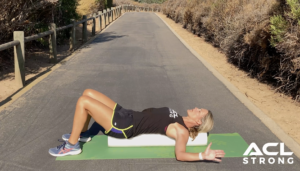
It’s not the case for everyone, but people generally don’t spend enough time stretching. We spend a lot of time driving, sitting, using a computer, looking at our phones…even skiing tends to put us into a forward flexed or rounded posture.
If we don’t counter that flexion by spending some time extending or lengthening, then the tissues adaptively shorten. Lacking flexibility means you aren’t distributing force over a large enough area, which leads to compensations and overuse. Hip, knee, and lower back problems are often a direct result.
➡️ So, put a little more effort into stretching. Aim for at least 2 days per week.
#5. Hidden Weaknesses
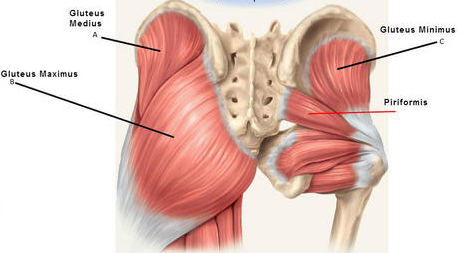
I can find weak spots in even the most elite athletes because I know where to look. Certain planes of motion and muscle groups tend to get neglected. Plus, athletes are really good at covering up their weaknesses. 🙈
The deep hip stabilizing muscles, including the gluteus medius, control movement of the pelvis and leg. Strengthening this group is one step to the process; while learning to CONTROL the muscles, or the movement, is another step.
Please soak that in again so you REALLY understand it.
Step 1️⃣: Strengthen the hip muscles
Step 2️⃣: Learn to CONTROL the muscles, with neuromuscular training
💪 Sometimes you have good strength, but you just need to learn control.
Patellar tendonitis, patellofemoral syndrome, IT band syndrome, meniscus tears, arthritis, and even ACL tears happen as a result of poor hip control.
➡️ So strengthen those hips up with the right exercises (the right way) and you’ll be in much better condition to do what you love without getting hurt or suffering from pain.
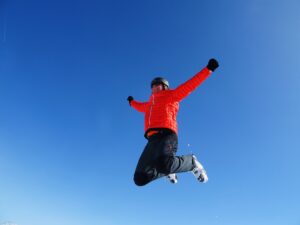
🤯 You don’t have to simply ACCEPT the fact that you HAVE or WILL HAVE knee problems if you’re a snow-skier. There are plenty of things you can do to avoid or manage this!
👉 Doing The RIGHT exercises (the RIGHT way) is the MOST EFFECTIVE way to protect your knees, reduce pain and stiffness, and ensure that you can ski your way through life.
I’ve seen how life-changing the right exercise plan can be for people with stiff, achey, or sore knees.
I developed the ACL Strong Signature Program to teach snow sports enthusiasts and active people of all ages how to strengthen effectively to be more durable, so they enjoy their sport more than ever.
ACL Strong helps them achieve this safely and in less time. The plan is straightforward. The exercises are efficient and easy-to-follow. We focus on quality over quantity AND we have a fun, supportive community to help everyone succeed.
We work with the BEST skiers and riders on the mountain. We work with the BEST, most PRO-ACTIVE ski resorts and associations. We help them train smarter for resilience and longevity.
If you want to feel better through the knees and enjoy your life more, start by checking out the available ACL Programs.
ACL Strong is for you if:
- You want to ski or ride another season WITHOUT INJURY
- You want to get rid of annoying pain or stiffness in your knees (or hips or lower back)
- You don’t want arthritis to worsen and limit your activity
- You are willing to do whatever it takes so you can continue enjoying outdoor activities for as long as possible
- You want to get in better shape for mountain sports

